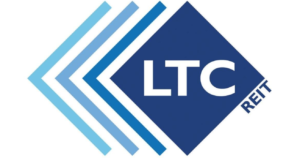Who wants late-night phone calls from renters asking you to fix their broken toilets? Being a landlord isn’t on most retirees’ wish list.
Everyone knows real estate can generate strong income and long-term appreciation, but let’s face it, rental real estate can be a hassle. That is, unless you own it through a real estate investment trust, more commonly known as a REIT. A REIT is one of the best ways for retirees to reap the benefits of real estate without the headaches and expenses of owning rental properties. If you are looking for more income or better diversification for your retirement portfolio, REITs are worth a look.
What Is a REIT?
You can think of a REIT as something akin to a mutual fund for real estate. A typical equity REIT owns a broadly diversified portfolio of properties, spread over many states and in some cases, over several nations. REITs typically buy larger, commercial-grade properties that few small investors could afford to purchase. Even if you own some rental houses, adding one or more REITs to your portfolio will greatly expand your real estate exposure. REITs are in nearly every sector of commercial real estate, including office space, multi-family residential, retail, industrial, self-storage, health-care, hotels, and even long-term care.
 While not as well known as some other retirement income sources, REITs are a large and well-established form of investing. According to Nareit, the industry’s association, REITs own more than $2 trillion of real estate assets in the U.S. including more than 200,000 properties in all 50 states and the District of Columbia. There are 225 REITs that trade on U.S. major stock exchanges, most on the New York Stock Exchange. There are many more that do not trade on the stock exchanges, but these carry more liquidity risk and, in some cases, come with higher fees. The average retiree is better suited focusing solely on REITs that trade on the major stock exchanges.
While not as well known as some other retirement income sources, REITs are a large and well-established form of investing. According to Nareit, the industry’s association, REITs own more than $2 trillion of real estate assets in the U.S. including more than 200,000 properties in all 50 states and the District of Columbia. There are 225 REITs that trade on U.S. major stock exchanges, most on the New York Stock Exchange. There are many more that do not trade on the stock exchanges, but these carry more liquidity risk and, in some cases, come with higher fees. The average retiree is better suited focusing solely on REITs that trade on the major stock exchanges.
Why REITs are an excellent source of retirement income
What makes REITs especially appealing to retirees is their income. Compared with other stocks, REITs typically pay much more income. The Standard & Poor’s 500 average yield (income from dividends) was recently only 1.85 percent, compared with around 4.0 percent for equity REITs. That means more money in your pocket for retirees who invest in REITs.
REITs typically own income-producing properties, with income coming primarily from rents. By law, REITs must pass 90 percent of their income through to shareholders, so their investors can expect to continue receiving high income for as long as the properties continue to generate income. What’s more, many REITs have excellent track records for consistently increasing their income over the years. If you’ve been on the paying-end of a real estate rental or lease agreement, then you know which direction rents usually go from year to year: Up.
There’s another version of real estate investment trusts that pays even higher income, but not without additional risks. We’re referring to mortgage REITs. Whereas equity REITs own their properties, mortgage REITs merely hold the mortgages. While initial income is higher, you aren’t in an ownership position and won’t benefit from capital appreciation. Mortgage REITs are subject to greater price fluctuation as interest rates rise and fall. They also must worry more over credit risk and loan defaults.
The majority of REITs are equity REITs, and for retirees looking for predictable income that can potentially grow over the years, equity REITs are the better choice.
Other Benefits of Owning REITs
REITs can add balance to a stock portfolio and enhance long-term total return, since their share price fluctuation often follows its own pattern and doesn’t mimic other stocks. According to Nareit, over the 25-year period from 1992 to 2016, equity REITs total returns were only 56 percent correlated with the total returns of other stocks, confirming that REITs do not necessarily move in tandem with other stocks when they go up and down. Based on Nareit’s research, the ideal allocation for REITs in a well-diversified portfolio is between 5 and 15 percent. In other words, if you have a $500,000 retirement portfolio, then investing anywhere from $25,000 to $75,000 in REITs might improve not only your income but total returns.
REITs trade on the stock market, which means they are the most liquid type of real estate you can buy. You can buy or sell shares in REITs on any day the markets are open. That also makes them ideal for adding to IRA, 401(k) and other retirement plans. Like other stocks, REIT prices fluctuate from day to day, meaning you can make a gain or suffer a loss. REITs are yield-sensitive, similar to bonds and utility stocks, and can suffer significant losses when interest rates rise sharply or when real estate values decline.
As with all investments, past performance is no guarantee of future results, but equity REITs have proven to be a reliable income source in the past and have generated competitive total returns. The FTSE Nareit All Equity REIT Index enjoyed a total return of 9.96 percent for the 25-year period ending May 31, 2019. The index outperformed the S&P 500 in 16 of those 25 years.
Examples of REITs
To help you better understand REITs, let’s look at three examples. Please note that these are NOT buy recommendations, but merely examples to help explain what REITs are and how they operate. Keep in mind there are more than 200 publicly traded REITs to choose from.
 Realty Income (NYSE: O) is one of the largest and best-known REITs. It’s popular with retirees because it pays its dividends monthly (most REITs pay quarterly) and because it has never failed to pay its monthly dividend in more than 50 years. It has increased its dividend every quarter, without fail, for the past 21 years. It owns more than 5,800 properties under long-term net lease agreements, spread over 49 states and 48 different industries. Its top tenants, according to the company, include stable companies such as Walgreens, 7-Eleven, Fedex, Dollar General, and LA Fitness.
Realty Income (NYSE: O) is one of the largest and best-known REITs. It’s popular with retirees because it pays its dividends monthly (most REITs pay quarterly) and because it has never failed to pay its monthly dividend in more than 50 years. It has increased its dividend every quarter, without fail, for the past 21 years. It owns more than 5,800 properties under long-term net lease agreements, spread over 49 states and 48 different industries. Its top tenants, according to the company, include stable companies such as Walgreens, 7-Eleven, Fedex, Dollar General, and LA Fitness.
 Public Storage (NYSE: PSA) is the world’s largest owner, operator and developer of self-storage facilities, with nearly 2,500 locations in the United States and more than 200 in Europe. The self-storage business is an attractive real estate sector because it requires minimal management and is relatively cheap to operate. Plus, people seem to have an insatiable need for extra space to put their stuff these days. As an income generator, Public Storage is below average for the REIT sector, with a current yield of 3.4 percent. However, it’s seen nice growth over the past decade, growing at an average annual rate of 14 percent, according to an analysis by Simply Wall St.
Public Storage (NYSE: PSA) is the world’s largest owner, operator and developer of self-storage facilities, with nearly 2,500 locations in the United States and more than 200 in Europe. The self-storage business is an attractive real estate sector because it requires minimal management and is relatively cheap to operate. Plus, people seem to have an insatiable need for extra space to put their stuff these days. As an income generator, Public Storage is below average for the REIT sector, with a current yield of 3.4 percent. However, it’s seen nice growth over the past decade, growing at an average annual rate of 14 percent, according to an analysis by Simply Wall St.

LTC Properties (NYSE: LTC) is engaged in the long-term care industry, hence its acronym “LTC.” Thanks to us baby boomers, this is a growth industry and will likely continue to be so for at least the next two decades. LTC owns more than 200 properties, spread across 28 states. The portfolio is equally split between senior housing and skilled nursing properties. It’s dividend yield is currently just shy of 5.0 percent and like Realty Income, LTC pays its dividend monthly. During the past decade, LTC has raised its dividend in most years.
Safer Ways to Buy REITs
Not sure which REIT to purchase? Concerned that the one (or two or three) you buy will prove to be underperformers? A safer way to buy REITs is to purchase a basketful of REITs. There are plenty of mutual funds and exchange-traded funds (ETFs) that buy only REITs. Like stock and bond mutual funds and ETFs, these investments buy a large number of REITs, further adding to your diversification and safety. Some are actively managed portfolios, which means they have skilled managers overseeing the portfolio and buying and selling the REITs as their fortunes rise and fall. Other REIT mutual funds and ETFs are index funds, which means their performance mirrors the composite results of all the REITS in the index. ETFs and mutual funds trade daily on the stock exchanges, so shares are easy to buy or sell at any time.
Many of the best-known names in money management operate REIT ETFs or mutual funds, including Vanguard, Charles Schwab, Fidelity, iShares (Blackrock), Invesco, T Rowe Price, and Cohen & Steers. If you need help sorting through the choices, several organizations provide REIT mutual fund and ETF rankings, including Kiplinger, Morningstar, U.S. News & World Report, Forbes, Investopedia, and Zacks.
Consider REITs for Income, Diversification
Talk with your financial planner or advisor before making changes to your portfolio and before adding REITs to your mix, or do thorough research yourself, if you are a DIY investor. For many, if not most, retirees, REITs offer attractive income, appealing total return prospects, and are an easy way to add diversification to IRA, 401(k), or other portfolios that are heavy in traditional stocks and bonds.
To learn more about REITs, visit the National Association of REITs website at https://www.reit.com/.
RELATED: Also see our stories on Six Reasons Why Retirees Need Not Fear Bear Markets and Why Retirees Are Turning to Stock Dividends for More Income.
Do you have comments to share about this story? We’d love to hear from you. Scroll down to add your comments below.
Note to readers: Some of the links on thisretirementlife.com are affiliate links from which we receive a small commission from sales of certain items, at no extra cost to you. As an Amazon Associate and a participant in other affiliate marketing programs, we earn from qualifying purchases. These commissions help support this blog so we can continue providing timely and useful information about living life to the fullest during the retirement years. See the full disclosure statement here.
Love this story? Sign up below to receive future blog post from This Retirement Life, sent to your email box, free of charge.










